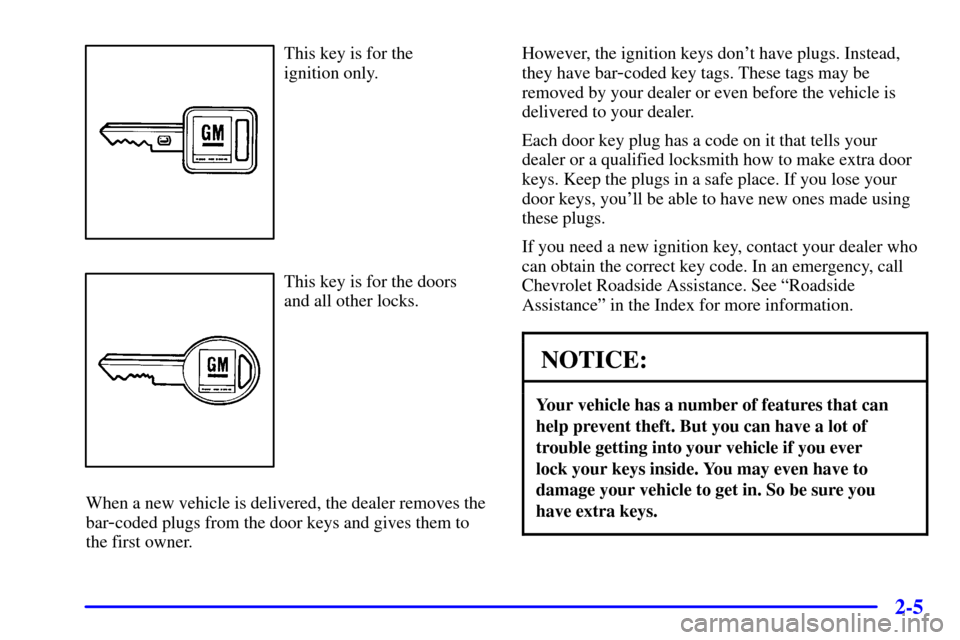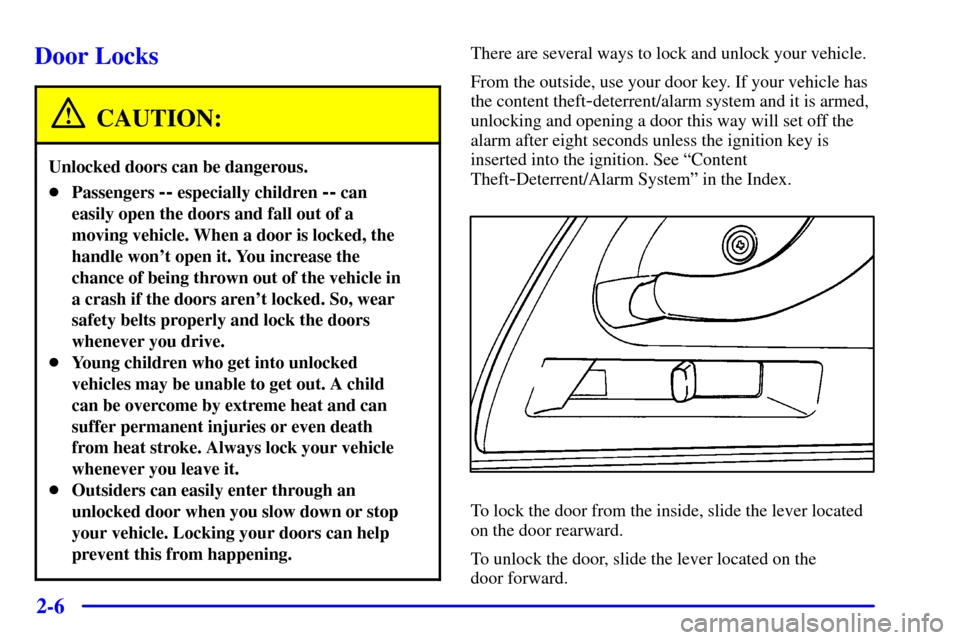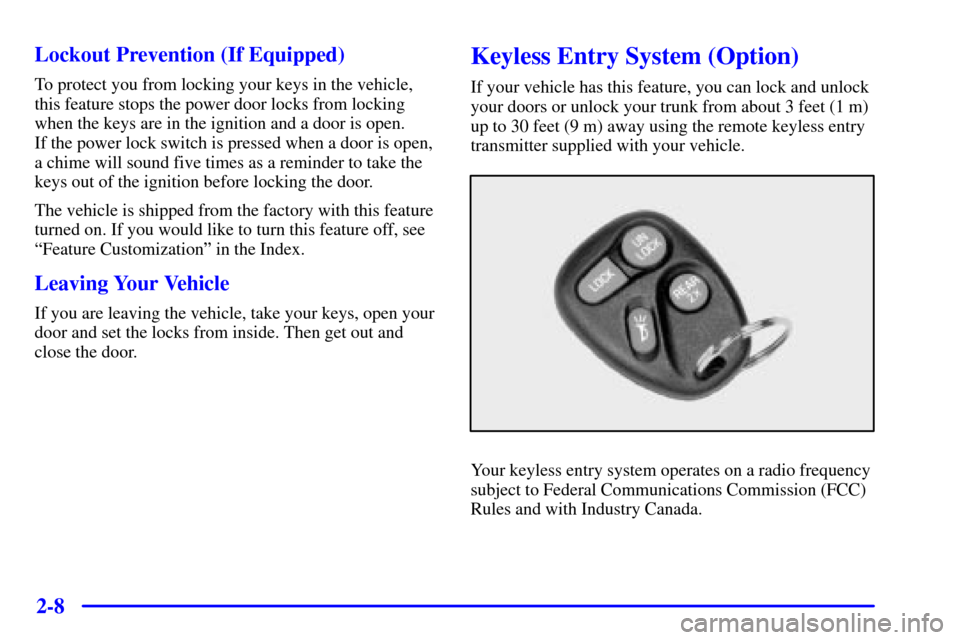Page 4 of 363
Table of Contents
Windows
Keys and Door Locks
Keyless Entry System (Option)
Hatch
Automatic Transmission
Manual Transmission
Parking Brake
Tilt Wheel
Turn Signal/Multifunction LeverWindshield Wipers
Cruise Control
Exterior and Interior Lamps
Mirrors
Storage Compartments
Cargo Cover
Accessory Power Outlet
Instrument Panel, Warning Lights and Gages Seats and Seat Controls
Safety BeltsAir Bag System
Restraint Systems for Children
Section
1
Section
2
Seats and Restraint Systems
Features and Controls
ii
Page 31 of 363
1-19
The best way to protect the fetus is to protect the
mother. When a safety belt is worn properly, it's
more likely that the fetus won't be hurt in a crash.
For pregnant women, as for anyone, the key to
making safety belts effective is wearing them properly.
Right Front Passenger Position
To learn how to wear the right front passenger's
safety belt properly, see ªDriver Positionº earlier
in this section.
The right front passenger's safety belt works the same
way as the driver's safety belt
-- except for one thing.
If the belt stops before it reaches the buckle, tilt the latch
plate and keep pulling until you can buckle the belt.
Page 37 of 363

1-25
�Your vehicle is equipped with a crash sensing and
diagnostic module, which records information about
the air bag system. The module records information
about the readiness of the system, when the system
commands air bag inflation and driver's safety belt
usage at deployment. The module also records speed,
engine rpm, brake and throttle data.
�Let only qualified technicians work on your air
bag system. Improper service can mean that your
air bag system won't work properly. See your dealer
for service.
NOTICE:
If you damage the covering for the driver's or the
right front passenger's air bag, the bag may not
work properly. You may have to replace the air
bag module in the steering wheel or both the
air bag module and the instrument panel for
the right front passenger's air bag. Do not open
or break the air bag coverings.
Servicing Your Air Bag-Equipped Vehicle
Air bags affect how your vehicle should be serviced.
There are parts of the air bag system in several places
around your vehicle. You don't want the system to
inflate while someone is working on your vehicle.
Your dealer and the service manual have information
about servicing your vehicle and the air bag system.
To purchase a service manual, see ªService and Owner
Publicationsº in the Index.
CAUTION:
For up to 10 seconds after the ignition key is
turned off and the battery is disconnected,
an air bag can still inflate during improper
service. You can be injured if you are close to an
air bag when it inflates. Avoid yellow connectors.
They are probably part of the air bag system.
Be sure to follow proper service procedures,
and make sure the person performing work
for you is qualified to do so.
The air bag system does not need regular maintenance.
Page 59 of 363

2-
2-1
Section 2 Features and Controls
Here you can learn about the many standard and optional features on your vehicle, and information on starting,
shifting and braking. Also explained are the instrument panel and the warning systems that tell you if everything is
working properly
-- and what to do if you have a problem.
2
-2 Windows
2
-4 Keys
2
-6 Door Locks
2
-8 Keyless Entry System (Option)
2
-13 Hatch
2
-15 Theft
2
-16 Content Theft-Deterrent/Alarm System (Option)
2
-19 PASS-Key� II
2
-28 New Vehicle ªBreak-Inº
2
-29 Ignition Positions
2
-31 Starting Your Engine
2
-34 Engine Coolant Heater (Canada Only)
2
-35 Automatic Transmission Operation
2
-39 Manual Transmission Operation
2
-42 Parking Brake
2
-44 Shifting Into PARK (P)
(Automatic Transmission Only)
2
-46 Shifting Out of PARK (P)
(Automatic Transmission Only)2
-46 Parking Your Vehicle
(Manual Transmission Models Only)
2
-47 Parking Over Things That Burn
2
-47 Engine Exhaust
2
-48 Running Your Engine While You're Parked
(Automatic Transmission)
2
-49 Limited-Slip Rear Axle
2
-49 Tilt Wheel
2
-50 Turn Signal/Multifunction Lever
2
-56 Exterior Lamps
2
-58 Interior Lamps
2
-59 Mirrors
2
-61 Storage Compartments
2
-65 T-Top Roof Panels (Option)
2
-72 Convertible Top (If Equipped)
2
-80 The Instrument Panel -- Your
Information System
2
-84 Warning Lights, Gages and Indicators
Page 62 of 363
2-4
Keys
CAUTION:
Leaving children in a vehicle with the ignition
key is dangerous for many reasons. A child or
others could be badly injured or even killed.
They could operate the power windows or other
controls or even make the vehicle move. Don't
leave the keys in a vehicle with children.
Page 63 of 363

2-5
This key is for the
ignition only.
This key is for the doors
and all other locks.
When a new vehicle is delivered, the dealer removes the
bar
-coded plugs from the door keys and gives them to
the first owner.However, the ignition keys don't have plugs. Instead,
they have bar
-coded key tags. These tags may be
removed by your dealer or even before the vehicle is
delivered to your dealer.
Each door key plug has a code on it that tells your
dealer or a qualified locksmith how to make extra door
keys. Keep the plugs in a safe place. If you lose your
door keys, you'll be able to have new ones made using
these plugs.
If you need a new ignition key, contact your dealer who
can obtain the correct key code. In an emergency, call
Chevrolet Roadside Assistance. See ªRoadside
Assistanceº in the Index for more information.
NOTICE:
Your vehicle has a number of features that can
help prevent theft. But you can have a lot of
trouble getting into your vehicle if you ever
lock your keys inside. You may even have to
damage your vehicle to get in. So be sure you
have extra keys.
Page 64 of 363

2-6
Door Locks
CAUTION:
Unlocked doors can be dangerous.
�Passengers -- especially children -- can
easily open the doors and fall out of a
moving vehicle. When a door is locked, the
handle won't open it. You increase the
chance of being thrown out of the vehicle in
a crash if the doors aren't locked. So, wear
safety belts properly and lock the doors
whenever you drive.
�Young children who get into unlocked
vehicles may be unable to get out. A child
can be overcome by extreme heat and can
suffer permanent injuries or even death
from heat stroke. Always lock your vehicle
whenever you leave it.
�Outsiders can easily enter through an
unlocked door when you slow down or stop
your vehicle. Locking your doors can help
prevent this from happening.
There are several ways to lock and unlock your vehicle.
From the outside, use your door key. If your vehicle has
the content theft
-deterrent/alarm system and it is armed,
unlocking and opening a door this way will set off the
alarm after eight seconds unless the ignition key is
inserted into the ignition. See ªContent
Theft
-Deterrent/Alarm Systemº in the Index.
To lock the door from the inside, slide the lever located
on the door rearward.
To unlock the door, slide the lever located on the
door forward.
Page 66 of 363

2-8 Lockout Prevention (If Equipped)
To protect you from locking your keys in the vehicle,
this feature stops the power door locks from locking
when the keys are in the ignition and a door is open.
If the power lock switch is pressed when a door is open,
a chime will sound five times as a reminder to take the
keys out of the ignition before locking the door.
The vehicle is shipped from the factory with this feature
turned on. If you would like to turn this feature off, see
ªFeature Customizationº in the Index.
Leaving Your Vehicle
If you are leaving the vehicle, take your keys, open your
door and set the locks from inside. Then get out and
close the door.
Keyless Entry System (Option)
If your vehicle has this feature, you can lock and unlock
your doors or unlock your trunk from about 3 feet (1 m)
up to 30 feet (9 m) away using the remote keyless entry
transmitter supplied with your vehicle.
Your keyless entry system operates on a radio frequency
subject to Federal Communications Commission (FCC)
Rules and with Industry Canada.